Guo Likun, Yang Hongtao, Xu Xiaoqing (China Features)
Long Tianbao, a 44-year-old peasant in Guizhou, one of China's poorest provinces, did not expected three kilograms of rice to change his family's fate.
Having his home village nestled deeply in the inhospitable Moon mountain, Long, an ethnic Miao in Baiwang village, Rongjiang county, had no idea what to expect when the government relocated his entire village to the county seat, 25 kilometers away.
"With no education background and only strength, can I find a job? How can I make ends meet in a town with high expenditure level?" he said
After much deliberation, Long and his wife decided to take three kilograms of rice to their new destination.
"If we find a job before we have eaten the rice, we will stay; if not, we will go back to the mountain and never move out," he said.
They both found a job in a brick company the next day.
Now, they have an apartment only three kilometers from their company, earn more than 6,000 yuan (900 U.S. dollars) a month, roughly equivalent to their annual household income in the past, and two children trained to be a teacher and a doctor.
Long, who had never ridden a bike before, has learnt to drive a forklift, ride a motorbike and got a license for electrical welding.

Villager Wei Guozeng prepares to plant sugarcane seedlings in the field in Rongjiang County, southwest China's Guizhou Province, on March 21, 2016. Farmers here are busy with planting off-season fruits like watermelons and sugarcanes in an effort to shake off poverty. (Xinhua/Zhang Hui)
China is closing in on its ambitious goal of achieving an "all-round well-off society," or a moderately prosperous society in all respects, with GDP and per capita income double those of 2010 by 2020.
The baseline task is to lift all people out of poverty.
This entails improving the wellbeing of 43.35 million people living below the national poverty line of 2,300 yuan in annual income at 2010 prices.
If the tasks are completed on time, China will meet the United Nations goal of wiping out poverty in all its forms 10 years ahead of the 2030 deadline.
China had 770 million poor residents in rural areas, or 97.5 percent of the rural population, when it started the reform and opening-up drive more than 30 years ago. Over 700 million have shaken off poverty since, accounting for over 70 percent of global poverty reduction.
These figures prompted The Economist to describe China as the "hero of the world's poverty-reduction efforts."
With 700 million people still struggling with poverty worldwide, half in sub-Saharan Africa and one-third in South Asia, more countries are turning to China for inspiration.
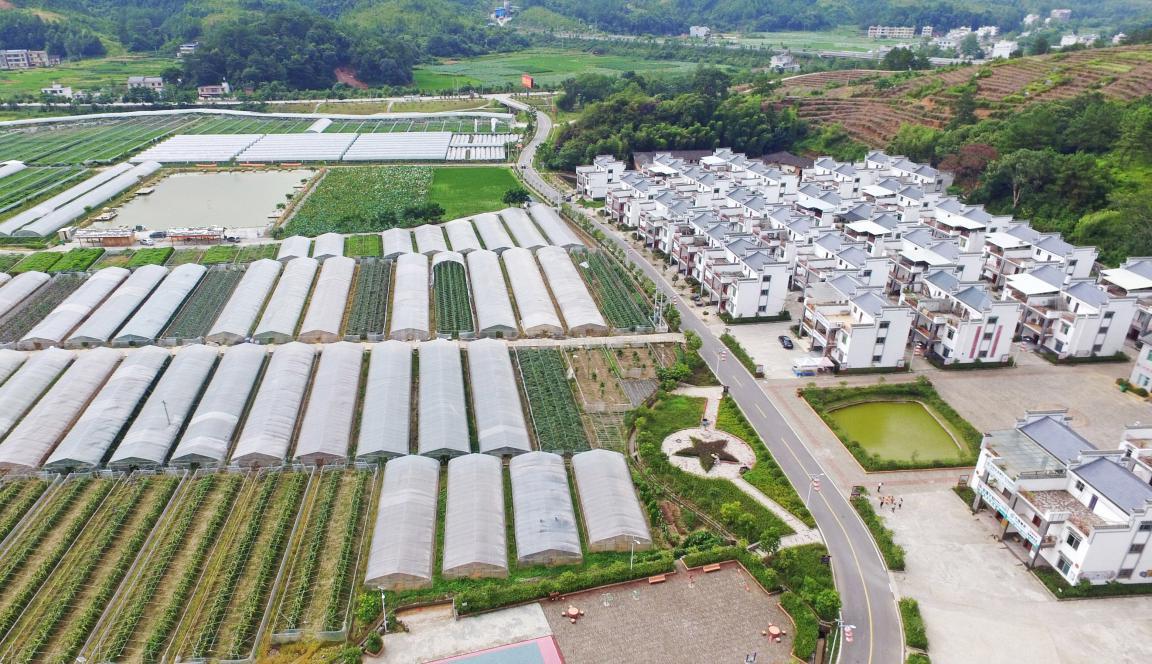
An aerial photo taken on Aug. 17, 2017 shows the view of Huawu Village in Ruijin City, east China's Jiangxi Province. Huawu Village, one of poverty-stricken villages in Jiangxi, started renovation and new house building with the help of the government in 2013. After 5 years of construction, Huawu villagers moved into new houses early in 2015. (Xinhua/Wan Xiang)
THE FINAL BUT PUSH
In past decades, China has built highways, railroads and ports, networks for electricity and water access, and every possible infrastructure to connect every possible place in the country, bringing vast numbers of people out of poverty.
For places like Baiwang village, which are locked in mountains with arid land, a fragile environment and frequent natural disasters, traditional relief methods failed.
Relocation has proved to be effective, ensuring every household a 50-square-meter apartment, access to tailored training and at least one family member employed.
Poverty in Baiwang has reduced to 4.8 percent from 68.9 percent.

Chinese President Xi Jinping (2nd R) visits the home of villager Zhang Guiming (1st R) at Songjiagou New Village, a centralized resettlement site under the approach of alleviating poverty through relocation in Kelan County in Xinzhou City, north China's Shanxi Province, on June 21, 2017. (Xinhua/Li Xueren)
To speed up eradication of extreme poverty, Guizhou has singled out 7,654 villages, each with no more than 50 households and poverty over 50 percent, to be relocated by 2020.
Hannah Ryder, a former head of policy and partnerships for the United Nations Development Programme in China, has warned of significant costs as China enters the most difficult phase of poverty alleviation.
"Poverty reduction, like so many important endeavors, is subject to the law of diminishing returns," she said.
The people who benefit first are most likely those who were best equipped to do so, owing to, say, their background or geography. By the time there are only a few - or even a few million - left, one can expect reaching them to be much harder, Ryder said.
Answering such problems, China is seeking to reform and diversify its poverty relief tactics.
The Chinese leadership has underlined high precision in its final poverty eradication push. This means poverty alleviation must focus on individuals, and use the right tools to ensure resources trickle down to the poorest in the most effective way.
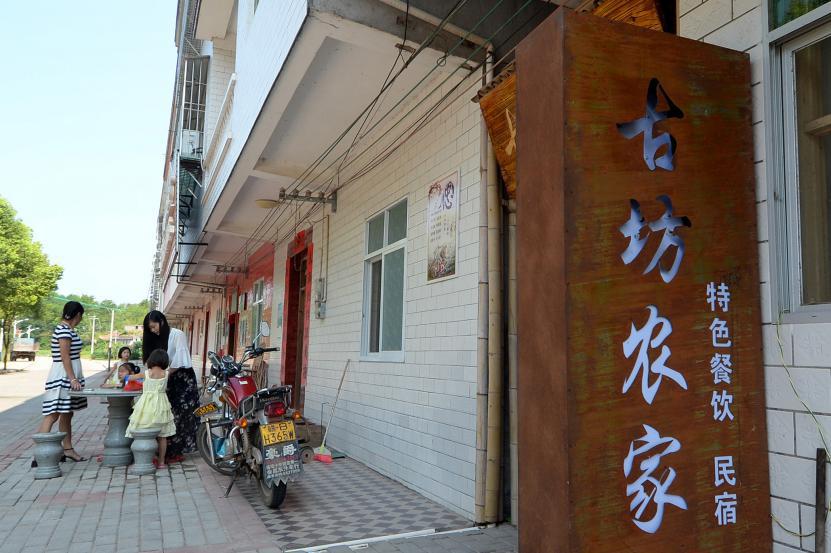
Tourists enjoy themselves in a family stay in Gufang Village in Wenwuba Township of Huichang County, Ganzhou City, east China's Jiangxi Province, on July 28, 2017. Since 2016, the local government in Gufang Village take targeted measures in poverty alleviation work. (Xinhua/Peng Zhaozhi)
China used to rely on sampling surveys to determine which villages or even counties could be legitimately considered impoverished, and concentrated efforts accordingly.
When poverty was widespread and the income gap was small, such a one-size-fits-all approach worked wonders.
In 2014, however, the government mobilized more than 800,000 people to put every poor individual on file, while identifying the causes of their poverty and needs to rid of it.
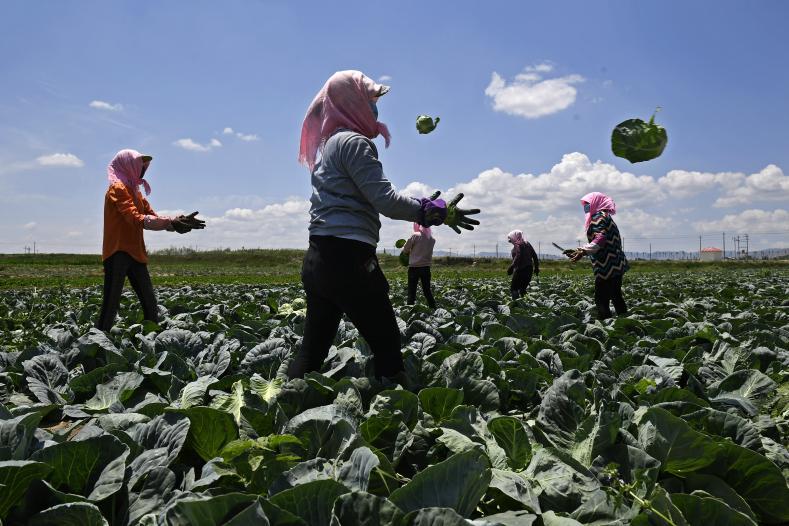
Villagers harvest vegetable in Yaomo Village, Guyuan City of northwest China's Ningxia Hui Autonomous Region, on June 30, 2017. (Xinhua/Wang Peng)
Nearly 2 million people were organized between August 2015 and June 2016 to make sure those who were really poor were included on the database, according to the State Council Leading Group Office of Poverty Alleviation and Development.
As a result, apart from a multi-year timetable to wipe out poverty, the Chinese government also created different policies for different regions based on their own conditions, such as developing business, relocation, compensating peasants in ecologically fragile areas, enhancing education and improving social security.
"SHORT PLANK" MATTERS
In a rare recent case, China announced the punishment of 23 local officials in July, including the vice governor of Gansu Province, who were held accountable for failure to prevent and investigate environmental violations in the Qilian Mountains national nature reserve.
More Chinese officials will face environmental impact audits of their work, according to a new reform endorsed on June 26, which says negative environmental impact will be marked on officials, even after they leave their posts, thus affecting future promotions.

A photovoltaic power generation is seen at Song Village in Fucheng County, north China's Hebei Province, on Aug. 3, 2017. Fucheng County released PV poverty alleviation projects to help local villagers live a better life. (Xinhua/Zhu Xudong)
It marked efforts by Chinese authorities to shift to a green development model by rectifying practices that boost economic growth at the cost of the environment, which is one of the country's major "short planks," or areas of weakness.
The "wooden bucket" theory, which states the amount of water a bucket can hold is determined by its shortest plank, has underpinned Chinese governance practices on its way to a moderately prosperous society, said Xu Yaotong, professor with the Chinese Academy of Governance.
To build a moderately prosperous society in all respects, the country must address those "short and weak planks", Xu said.
"Achieving an all-round well-off society is not a game of figures or speed," Chinese President Xi Jinping told officials late last year.
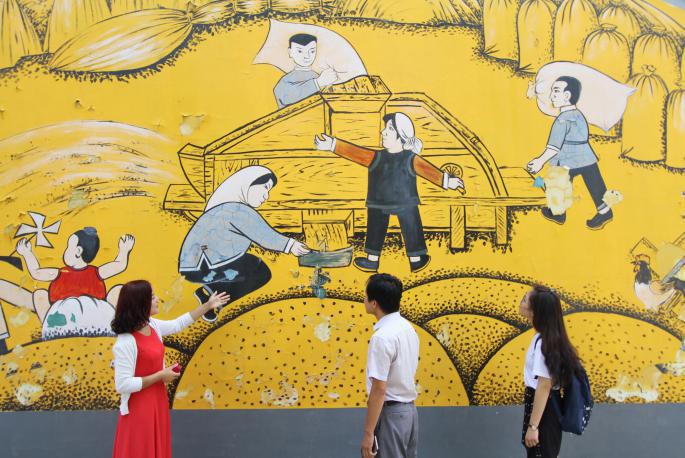
Tourists visit a characteristic town in Guantao County, north China's Hebei Province, on July 19, 2017. The county built some characteristic towns to promote tourism and alleviate poverty since 2014. (Xinhua/Mu Yu)
At a high-profile workshop in late July, Xi identified three battles that must be won to ensure the goal is achieved on schedule: preventing and defusing major risks, precision in poverty eradication, and pollution prevention and control.
"While maintaining medium to high economic growth, the Communist Party of China (CPC) also moves to improve people's quality of life, which may include fewer hazy days, cleaner rivers, affordable apartments and a better social welfare safety net," said Xin Ming, professor with the Party School of the CPC Central Committee.
"A moderately prosperous society in the world's most populous country would be good news for both China and the world," Xin said.
Though China's economy is no longer growing at the dazzling speed it once was, its systematic efforts on restructuring and defusing possible threats to sustainability make it remain a powerful engine for global growth.
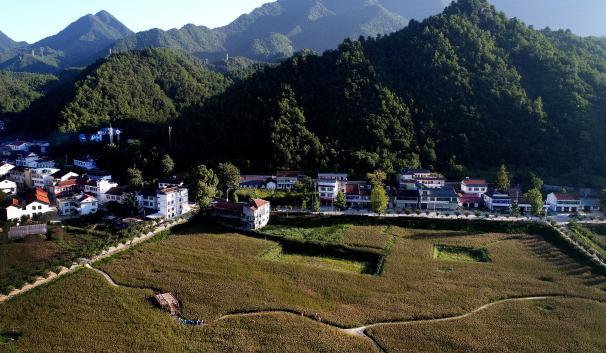
Photo taken on Aug. 9, 2017 shows the bird's-eye view of Liuba County, northwest China's Shaanxi Province. In recent years, local authorities put great efforts in protecting ecology and preventing pollution. Up till now, the forest coverage rate here reached a new height of 90.8 percent. (Xinhua/Tao Ming)
China's rapid development comes at a heavy price to the environment, something the West knows all too well, said UNDP Administrator Helen Clark.
"But we now see that China is really stepping up with leadership on climate change, which is so critical, because what China does is of global significance, given the size of its economy and the size of the population," she said.
CHINA RECIPE
In April this year, Mark van den Boogaard, a senior policy adviser for the UNDP, and Javier Miranda, president of Broad Front in Uruguay, visited mountainous areas in Yunnan Province to get a flavor of China's targeted poverty relief practice.
Mark van den Boogaard was impressed by the CPC's comprehensive guidance and the joint efforts of society in poverty alleviation.
"From what we have seen in the north of Yunnan, under the leadership of the CPC, the Chinese authorities are clearly on the right track," he said.
Many believe China's ability to coordinate nationwide efforts to combat poverty, lies in its socialist system with Chinese characteristics and that this system is the country's institutional advantage.
China has allocated 282.2 billion yuan for poverty relief from the central budget and arranged 270 billion yuan via local government debt between 2013 and 2017.
Meanwhile, more than 195,000 first secretaries have been stationed in impoverished villages, while 775,000 Party cadres have been sent to assist their work.

Members of a delegation visit Nanhe County of Xingtai, north China's Hebei Province, on Dec. 13, 2016. About 30 officials from embassies, organizations and experts of 21 countries and regions visited Xingtai recently to witness the implementation of poverty alleviation measures in the city. (Xinhua/Mou Yu)
China's major achievements in past years mean that socialism with Chinese characteristics has expanded the pathway to modernization for developing countries, thus providing Chinese wisdom and Chinese solutions to problems facing mankind, Xi said.
Severino Cabral, head of the Brazilian Institute of China and Asia Pacific Studies, said that what China had done in ensuring social progress while markedly improving people's living standard had won admiration across the globe.
As a major developing country with over 1.3 billion people, China has gradually embarked on a successful path of reducing poverty through development with distinct Chinese features.
"China's growth model and the country's governance style have offered inspiration to other countries, and China's proposal for common development has been increasingly responded to in the face of unstable global economy and security," Cabral said.
What happens in China does not and should not stay in China.

Liu Yongfu, director of the State Council Leading Group Office of Poverty Alleviation and Development, receives an interview before the opening meeting of the fifth session of the 12th National People's Congress at the Great Hall of the People in Beijing, capital of China, on March 5, 2017. (Xinhua/Zhao Yingquan)
China's successful poverty reduction experience has drawn the attention of the world. Last October, officials from 15 developing countries, including Malawi, Ghana, and Kenya, came to Beijing to attend a seminar on public service and poverty reduction for developing countries.
"China is a country with a large population, a weak economic foundation and unbalanced development. Almost each of its problem involving people's livelihood is a tough global problem," said Wang Jun, head of the information department of the China Center for International Economic Exchanges.
"The journey to a moderately prosperous society, an incessant process of exploring and solving such problems, could offer a China recipe for the least developing nations facing similar issues, " Wang said. "It may possibly serve as a fate changer for them." Enditem
